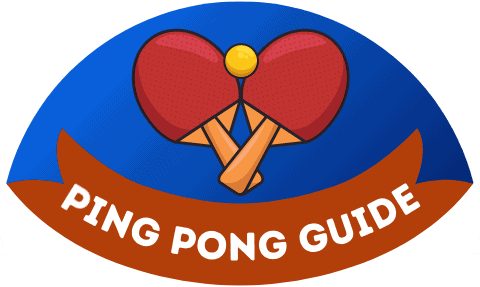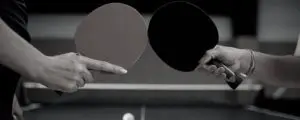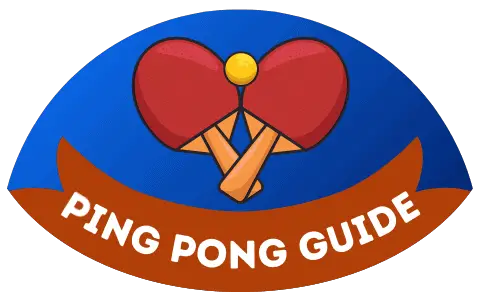Sometimes it’s funny how you just take things for granted without questioning them because it’s always been that way and you don’t know it any different. From the first time I had a table tennis bat in my hand until now, the rubbers always had the same color. One side black, the other red. But why is that the case?
The reason why rackets have two different colors is that it is easier to distinguish the two sides of the racket of the opponent. These can have etxrem different properties.
So you can give extreme spin with some, whereas others are more suitable for controlled shots without spin. The different colors of the two sides of a table tennis bat serve to help players better adjust to each other’s shots, since they know which side of the bat has which properties. It is not entirely clear why black and red were chosen. The key thing is that you can clearly distinguish between the two colors and it also has a clear contrast to the color of the ball.
The story until the current rule was finally introduced in 1985 is very entertaining. As long something is not regulated, players of course exploit all freedoms…
What led to the current rule?
Originally, there was simply no reason for two different colors. There was one type of rubber for the surface and that was it. But, as it always happens, as popularity grew, new innovations were developed.
Suddenly there were rubbers for different playing situations: Fast and slow plays, some for extremely high and extremely low spin, some for attack and some for defense, and so on.
But the rules remained unchanged for the time being, and so the players used the same colors for both rubbers. Of course, the players themselves knew exactly which side had which characteristics and could simply turn their paddle in their hand during the game and even during the rallies and thus drive their opponents to despair.
If, like me, you don’t know any different, you have to imagine what it must have been like to play against a tricky opponent who played with two extremely different rubbers – and both sides were black.
One time the forehand comes with extreme topspin, the next shot comes with no spin at all on exactly the same movement. I would have extreme problems with that and probably no chance. I can instantly understand the frustration of the affected players.
Finally, in 1983, the ITTF decided to put an end to this. Both sides of a ping pong bat should be clearly distinguishable from each other. 2 years later it was decided that only red and black were allowed as rubber colors.
At this point, some will ask: And how do you now know before a match which characteristics the red and which the black side of the paddle has?
The answer is simple. Before a match, both players have the right to inspect the opponent’s racket and to familiarize themselves with the rubbers. As long as the racket does not break during the match, you are not allowed to change it.
What types of rubbers are there?
Yes, rubbers can have different properties, but which ones are there actually and what makes them different? In general, there are 4 different types of rubbers. Within each type there are then of course again variations in thickness and hardness.
The 4 Rubber Types:
Smooth Rubber:
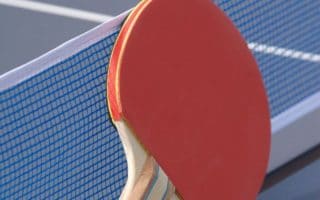
This is probably the rubber most people know, because it is the most common the most widespread on hobby paddles, and professionals also play with it most often. It is also called inverted because the pimples of the rubber coating face inwards and the smooth side faces outwards. Overall, this rubber offers the most variation in the game, which is why it is used by the majority of players. With the smooth rubber, you can not only generate the most spin but also play fast attacking balls. This rubber is therefore suitable for most playing styles.
Info: Are you looking for a good smooth rubber? Here is my recommendation:
Anti Topspin:
This rubber is also inverted and has a smooth surface. However, it does not generate much spin itself, but serves to neutralize the opponent’s topspin. In addition, the rubber is rather slow and thus offers more control. The rubber is therefore ideal for defensive players and defending against attacking shots.
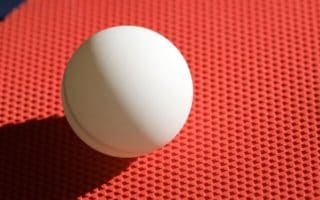
Short Pimples:
If you do not invert the rubber, the pimples point outwards. Depending on the thickness of the rubber, there are either short or long pimples. Similar to Anti Topspin, short pimples are not suitable for playing your own spin, but they are mainly used for control. However, you can also play fast attacking balls with them.
Long Pimples:
The long pimples are perfect to counter the spin of the opponent. For example, if you block a topspin with this rubber, it leads to an undercut. They are therefore ideal for your own defense. However, since it is rather difficult to attack, long pimples can only be found on one side of the racket.
If you take a look at the different types of rubber, you can easily understand why the sides of the paddle have to be black and red. It’s challenging enough to react to the different characteristics, even if you know what’s coming.
Which color do you use for forehand and backhand?
Many may have noticed that most players play the forehand with the red side and the backhand with the black side. So you might ask: is there a rule about that, too?
The answer is no. It has simply become the norm that black rubbers tend to be the ones you attack with, and most players play them on the forehand. But you can find both red rubbers for a lot of spins and fast shots, and black ones for a lot of control and anti-spin.
How is a table tennis bat structured?
The average bat consists of 3 layers:
- Blade
- Sponge
- Rubber
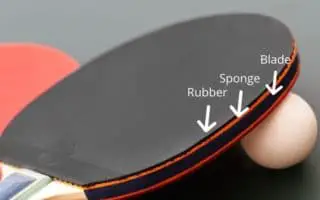
There are also racket variants without a sponge. Then the rubber is glued directly to the wood. However, this is rather the exception. Together with the sponge, the rubber may not exceed a thickness of 4 millimeters.
The sponge itself must not be thicker than 2.4 millimeters. In addition to the selected rubber, the various options for the sponge can also influence the racket properties.
